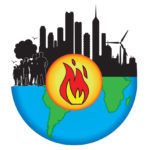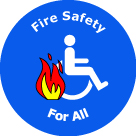2015-11-06 ! We are very pleased to announce that the Fire Safe Europe Alliance … www.firesafeeurope.eu … has become actively involved, together with Glasgow Caledonian University and FireOx International, in co-hosting SFE 2016 DUBLIN. To facilitate the Network’s full engagement and provide sufficient time for promotion, etc … it was jointly agreed that the new dates for this Event shall be from 28-30 September 2016.
We have every confidence that SFE 2016 DUBLIN will now be a much better event … having a wider range of stakeholder participation.
.
2015-06-29 …
Sustainable Fire Engineering – Effective Fire Safety for All in Sustainable Buildings !
28-30 September 2016 Dublin, Ireland
————
www.sustainable-firengineering.ie or www.sfe-fire.eu
———
Approved Regional Sustainable Built Environment Conference in the 2016-17 Series
——
The Gresham Hotel, O’Connell Street, Dublin, Ireland
Céad Míle Fáilte (Hundred Thousand Welcomes) to Dublin, in Ireland … and to the First International Conference devoted to this complex subject !
The 21st Century has had a cruel and savage birth: extreme man-made events, hybrid disasters, severe natural events, complex humanitarian emergencies, with accelerating climate change and variability. The old certainties are crumbling before our eyes …
The resolute Answer to these threats and the rapidly changing social and environmental needs of our world is Sustainable Fire Engineering !
• SFE fulfils a critical role in the realization of a Safe, Resilient & Sustainable Built Environment for All ;
• SFE facilitates positive progress towards the United Nation’s 17 Sustainable Development Goals & 169 Performance Targets, which were adopted in September 2015 ;
• SFE fast-tracks proper compliance with the Basic Requirements for Construction Works in the European Union’s Construction Products Regulation 305/2011 (Annex I), specifically the interlinked Requirements 7, 2, 1, 3 & 4.
Please join us in an informal, multidisciplinary and pre-normative forum … as we examine Sustainable Fire Engineering more deeply.
INTRODUCTION to SFE 2016 DUBLIN
Fire Losses – both direct and indirect – amount to a very significant percentage of GDP in all economies, whether they are rich or poor … and result in enormous environmental damage and social disruption. Fire Engineering, including Fire Prevention and Protection in Buildings, is a major multi-billion Euro/Dollar component of the Construction Industrial Sector – worldwide.
Unfortunately … a fundamental conflict exists between Sustainable Building Design Strategies and the fire safety responses adopted in today’s Conventional Fire Engineering. To take a simple example: for cooling, heating or ventilation purposes in a Sustainable Building, it is necessary to take advantage of natural unobstructed patterns of air movement in that building. On the other hand, fire engineers in private practice and control personnel in Authorities Having Jurisdiction (AHJ’s) will demand that building spaces be tightly compartmented in order to limit the spread of fire and smoke … dramatically interfering with those natural patterns of air movement.
Unusual fire behaviour and a range of difficult fire safety issues (critical, in the case of firefighters) also arise from the Innovative Design Features (for example, ‘green’ roofs, elaborate intelligent façades) and Building Products / Systems (for example, photovoltaic panels) being installed in Sustainable Buildings.
A wide chasm separates the language and understanding of these two very different design disciplines. As a result, the performance of Sustainable Buildings can be seriously compromised. If, on the other hand, adequate independent technical control is absent on site … it is fire safety which is weakened.
And because, in most countries, the emphasis is placed on pre-construction design intent rather than the ‘real’ performance of the completed/occupied building … these problems are ignored and remain hidden … until a serious fire breaks out !
SUSTAINABLE FIRE ENGINEERING’s AIM
The Aim of Sustainable Fire Engineering is to dramatically reduce all direct and indirect fire losses in the Human Environment (including social, built, economic, environmental, virtual, and institutional) … and to protect the Natural Environment.
Towards Zero Preventable Fires in the Built Environment !
In essence … Sustainable Fire Engineering heavily front-loads Fire Prevention and Fire Protection Measures … above and beyond the minimal and very limited fire safety objectives mandated by current legislation.
SFE’s Key Concepts are … Reality – Reliability – Redundancy – Resilience !
SFE Design Solutions are …
- Adapted to local geography, climate change and variability, social need, economy, and culture ;
- Reliability-based ;
- Person-centred ;
- Resilient.
SFE 2016 DUBLIN OBJECTIVES
1. To initiate discussion and foster mutual understanding between the International Sustainable Development / Climate Change / Urban Resilience Communities and the International Fire Science & Engineering Community.
2. To bring together today’s disparate Sectors within the International Fire Science and Engineering Community … to encourage better communication between each and trans-disciplinary collaboration between all.
3. To transform Conventional Fire Engineering into an ethical and fully professional Sustainable Design Discipline which is fit for purpose in the 21st Century … meaning … that fire engineers can participate actively in a sustainable design process, and can respond creatively with sustainable fire engineering design solutions which result in Effective Fire Safety for All in Sustainable Buildings.
4. To launch a CIB W14 Research Working Group VI Reflection Document: ‘Sustainable Fire Engineering Design & Construction’ … which will establish a framework for discussion on the future development of Sustainable Fire Engineering.
SFE 2016 DUBLIN WEBSITE
Today ! Visit the SFE 2016 DUBLIN Website at … www.sustainable-firengineering.ie or www.sfe-fire.eu
Download the Information on the Links Page … Review the wide range of Topics which will be examined and discussed at SFE 2016 DUBLIN … Submit an Abstract for a Paper … and Give serious consideration to becoming an Industry Exhibitor, or an Enlightened, Far-sighted Sponsor !!
.
.
END


